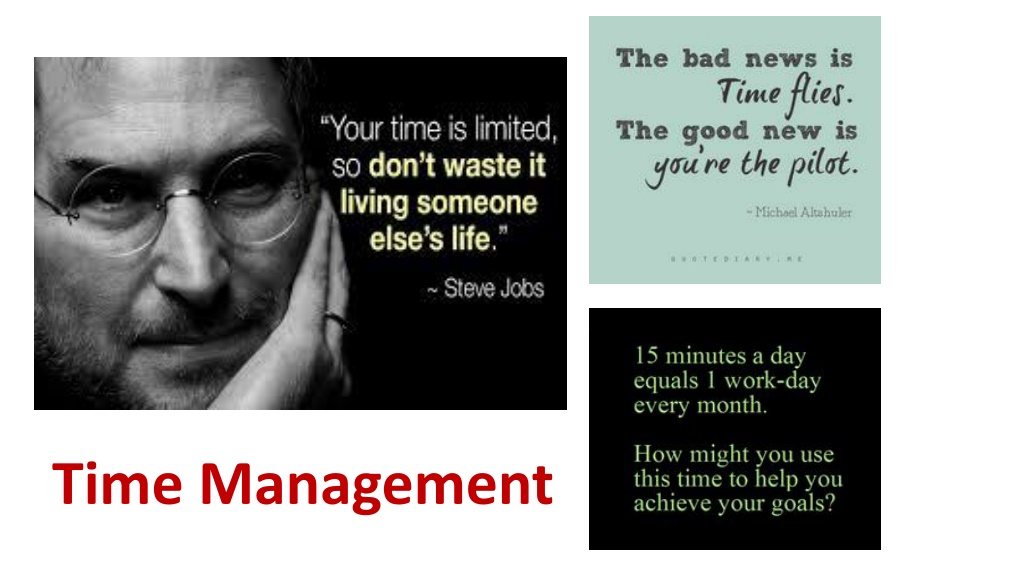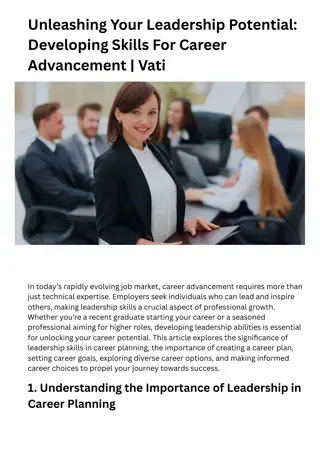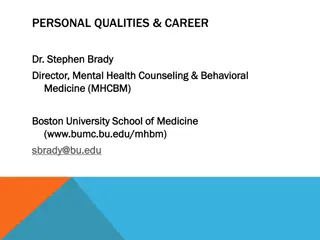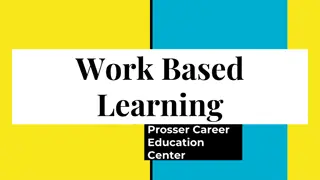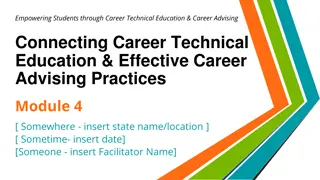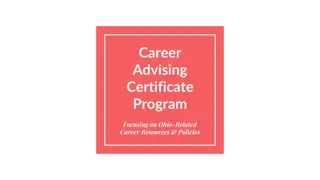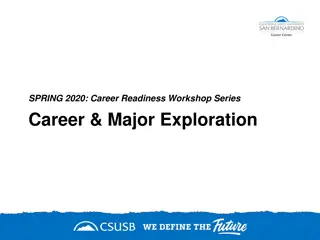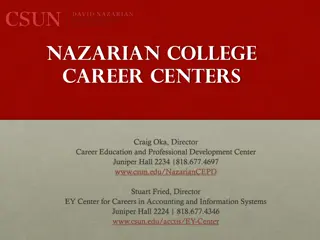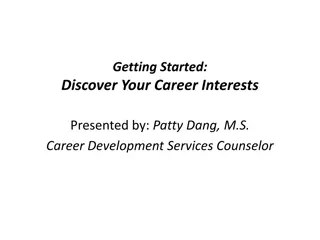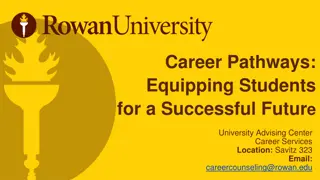Strategic Time Management for Career Success
Enhance your time management skills to align tasks with career goals, prioritize effectively, and maximize productivity. Explore techniques to identify high and low-value activities, say yes or no strategically, and focus on progress over perfection. Engage in group discussions, journaling, and activity tracking to optimize your time allocation. Take control of your schedule and invest in activities that yield the highest returns for your career growth and personal fulfillment.
Download Presentation

Please find below an Image/Link to download the presentation.
The content on the website is provided AS IS for your information and personal use only. It may not be sold, licensed, or shared on other websites without obtaining consent from the author. Download presentation by click this link. If you encounter any issues during the download, it is possible that the publisher has removed the file from their server.
E N D
Presentation Transcript
Learning Objectives 1. Identify tasks highest & lowest value to your career/life goals: How does it map to how you spend your time? 2. Understand how and what to say yes and no to 3. Identify when progress not perfection is appropriate 4. Commit to incorporating time management strategies that will enhance efficiency, effectiveness, & vitality
Begin with the end in mind Journal for 5 minutes Where do you hope to be in your career 5 years from now? Refer to your time tracker Does the way your spend your time, reflect your career goals? What did you learn from tracking your activities?
Begin with the end in mind Discuss in groups of 3 for 10 minutes Your top 3 takeaways from readings What you learned from tracking your activities
Begin with the end in mind Large group discussion Themes from small group discussions Takeaways from readings What you learned from tracking your activities
How to know what to say yes and no to Strategically use limited time High Yield Low Yield Low Effort/Time High Effort/Time
Strategically using limited time Spend 5 minutes to complete the quadrants using activities from your time tracker In each of the table quadrants, write the work activities you currently spend your time according to Time/effort Importance/yield
Strategically using limited time Group discussion: Which quadrants do you spend most of your time in? What are strategies for spending more time in the high yield quadrants? What are strategies for diminishing time spent in the low yield quadrants?
7 steps to decide what to say yes to 1. Is this an opportunity I want to take on or I feel like I should take on? Follow your gut reaction & take on projects that align with your passions When you open the email is your first reaction Oh sh**! 2. If you say yes to this request, can you under-promise and over- deliver? Only take on projects that you are willing to devote the necessary energy to excel Borrowed from Emelia J. Benjamin, MD, ScM
7 steps to decide what to say yes to 3. Are you clear about the time commitment required for this project? Ask for clarification, if necessary 4. Have you taken the necessary time to reflect on whether or not this project aligns with your career goals/passions and is feasible given other commitments? Follow the 24 hour rule Let the person making the request know that you will get back to him/her within 24 hours with a response 5. If your response is no, have you made this clear? No is a complete sentence Do not say no but leave the door partially open and/or leave lack of clarity about your final decision Borrowed from Emelia J. Benjamin, MD, ScM
7 steps to decide what to say yes to 6. If your response is no, have you thought of someone else that the person making the request can approach instead? Solve the requestor s problem and recommend someone else for whom this project might be a good opportunity. 7. If your response is yes, what are the time/effort constraints you will put around this project? Remember progress, not perfection What will you take off your plate? Borrowed from Emelia J. Benjamin, MD, ScM
Using your time efficiently Self-reflect and journal for 5 minutes What are examples of activities that you can cut corners on without impairing your effectiveness? Consider the following: What is the opportunity cost of perfectionism? In what areas are you competent enough to cut corners? Refer back to your quadrant High yield more attention/time Low yield less attention/time
Using your time intentionally At the beginning of the week: Review and update your to-do lists Review your calendar(s) 1 week back, 3+ weeks forward Identify up to 3 important chunks of work that you want to complete in the coming week Sketch out how you want to spend your time Block out time on your calendar Adapted from Susan R. Johnson
Using your time intentionally At the beginning of the day, create an MIT ( most important tasks ) plan: * The deadline is today Must* be done today . . * It will be so great if I get this done today but nothing bad will happen if it don t. Aim* to do today 1. . 2. . 3. .
You are the expert Group discussion What are time management strategies that have worked for you?
Commitment Journal for 5 minutes In what specific ways will you change your daily routine to improve your efficiency and vitality? What are you already doing that you want to do more of? What behaviors to you want to change? Map out on your calendar how you plan to use your time over the coming week.
